Study of Quinoline Insoluble (QI) Removal for Needle Coke-Grade Coal Tar Pitch by Extraction with Fractionalized Aliphatic Solvents and Coke Formation Thereof
Abstract
:1. Introduction
2. Experimental
2.1. Materials
2.2. Sample Preparation
2.2.1. Preparation of Fractionalized Solvents
2.2.2. Preparation of Soft Pitch from Coal Tar
- Preparation of QI-removed soft pitch
- Preparation of coke specimen from soft pitch
2.3. Characterization
3. Results and Discussions
4. Conclusions
Author Contributions
Funding
Institutional Review Board Statement
Informed Consent Statement
Data Availability Statement
Conflicts of Interest
References
- Hussein, A.; Fafard, M.; Ziegler, D.; Alamdari, H. Effects of charcoal addition on the properties of carbon anodes. Metals 2017, 7, 98. [Google Scholar] [CrossRef]
- Cho, J.H.; Im, J.S.; Bai, B.C. Effect of particle orientation and porosity on thermal conductivity of petroleum pitch polymer-based carbon molded body. Appl. Sci. 2020, 10, 7281. [Google Scholar] [CrossRef]
- Abrahamson, J.P.; Rajagopalan, R.; Vander Wal, R.L. Porous (Swiss-Cheese) graphite. C J. Carbon Res. 2018, 4, 27. [Google Scholar] [CrossRef] [Green Version]
- Ball, D.R. Influence of the type of quinoline insolubles on the quality of coal tar binder pitch. Carbon 1978, 16, 205–209. [Google Scholar] [CrossRef]
- Zhu, Y.; Zhao, C.; Xu, Y.; Hu, C.; Zhao, X. Preparation and characterization of coal pitch-based needle coke (Part I): The effects of aromatic index (fa) in refined coal pitch. Energy Fuels 2019, 33, 3456–3464. [Google Scholar] [CrossRef]
- Zhu, Y.; Liu, H.; Xu, Y.; Hu, C.; Zhao, C.; Cheng, J.; Chen, X.; Zhao, X. Preparation and Characterization of Coal-Pitch-Based Needle Coke (Part III): The Effects of Quinoline Insoluble in Coal Tar Pitch. Energy Fuels 2020, 34, 8676–8684. [Google Scholar] [CrossRef]
- Crelling, J.C. Coal Carbonization. In Applied Coal Petrology; Elsevier: Burlington, MA, USA, 2008; pp. 173–192. [Google Scholar]
- Mochida, I.; Fei, Y.Q.; Oyama, T.; Korai, Y.; Fujitsu, H. Carbonization of coal-tar pitch into lump needle coke in a tube bomb. J. Mater. Sci. 1987, 22, 3989–3994. [Google Scholar] [CrossRef]
- Guo, Y.; Li, Y.; Ran, N.; Feng, G. Co-carbonization effect of asphaltene and heavy oil in mesophase development. J. Mater. Sci. 2016, 51, 2558–2564. [Google Scholar] [CrossRef]
- Figueiras, A.; Granda, M.; Casal, E.; Bermejo, J.; Bonhomme, J.; Menendez, R. Influence of primary QI on pitch pyrolysis with reference to unidirectional C/C composites. Carbon 1998, 36, 883–891. [Google Scholar] [CrossRef]
- Mora, E.; Santamaria, R.; Blanco, A.C.; Granda, M.; Menendez, R. Mesophase development in petroleum and coal-tar pitches and their blends. J. Anal. Appl. Pyrolysis 2003, 68–69, 409–424. [Google Scholar] [CrossRef]
- Moriyama, R.; Hayashi, J.I.; Chiba, T. Effects of quinoline-insoluble particles on the elemental processes of mesophase sphere formation. Carbon 2004, 42, 2443–2449. [Google Scholar] [CrossRef]
- Cao, Q.; Xie, X.; Li, J.; Dong, J.; Jin, L. A novel method for removing quinoline insolubles and ash in coal tar pitch using electrostatic fields. Fuel 2012, 96, 314–318. [Google Scholar] [CrossRef]
- Tang, X.; Wei, X.; Xu, D.; Zhang, H.; HE, X.; Xiong, C.; Tang, H. Removal of QI from medium-temperature coal tar pitch and preparation of needle coke through carbonization. Chin. J. Mater. Res. 2016, 30, 448–456. [Google Scholar]
- UOP375-07. Calculation of UOP Characterization Factor and Estimation of Molecular Weight of Petroleum Oil; ASTM International: West Conshohocken, PA, USA, 2007; Available online: www.astm.org (accessed on 23 January 2016).
- Balan, V.; Mihai, C.T.; Cojocaru, F.D.; Uritu, C.M.; Dodi, G.; Botezat, D.; Gardikiotis, I. Vibrational spectroscopy fingerprinting in medicine: From molecular to clinical practice. Materials 2019, 12, 2884. [Google Scholar] [CrossRef] [PubMed] [Green Version]
- Khandare, P.M.; Zondlo, J.W.; Stansberry, P.B.; Stiller, A.H. Rheological investigations of pitch material Part II: Viscosity measurement of A240 and ARA-24 pitches using a high-temperature high-pressure rheometer. Carbon 2000, 38, 889–897. [Google Scholar] [CrossRef]
- Mochida, I.; Fei, Y.Q.; Korai, Y.; Fujimoto, K.; Yamashita, R. Carbonization in the tube bomb leading to needle coke: III. Carbonization properties of several coal-tar pitches. Carbon 1989, 27, 375–380. [Google Scholar] [CrossRef]
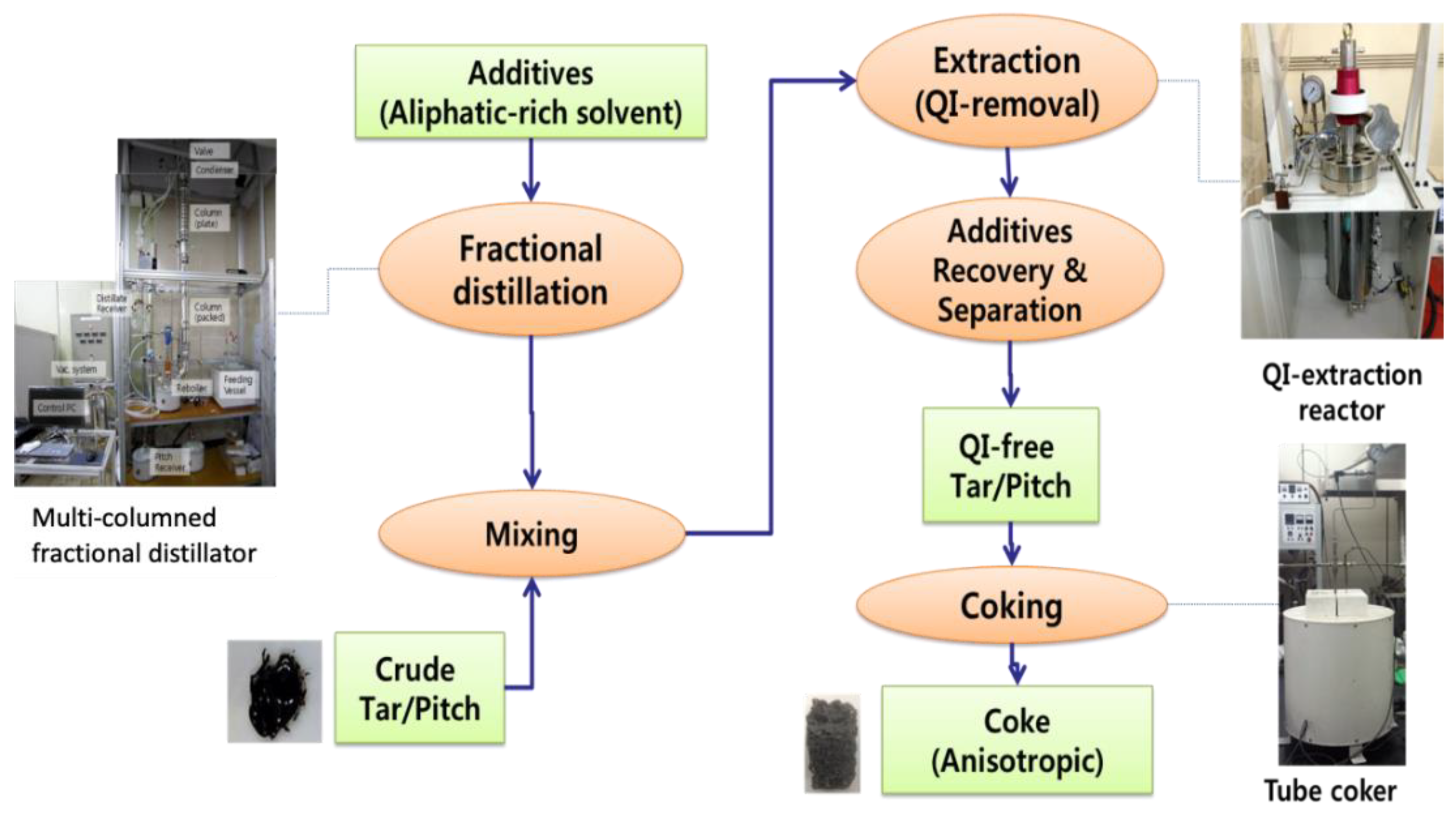
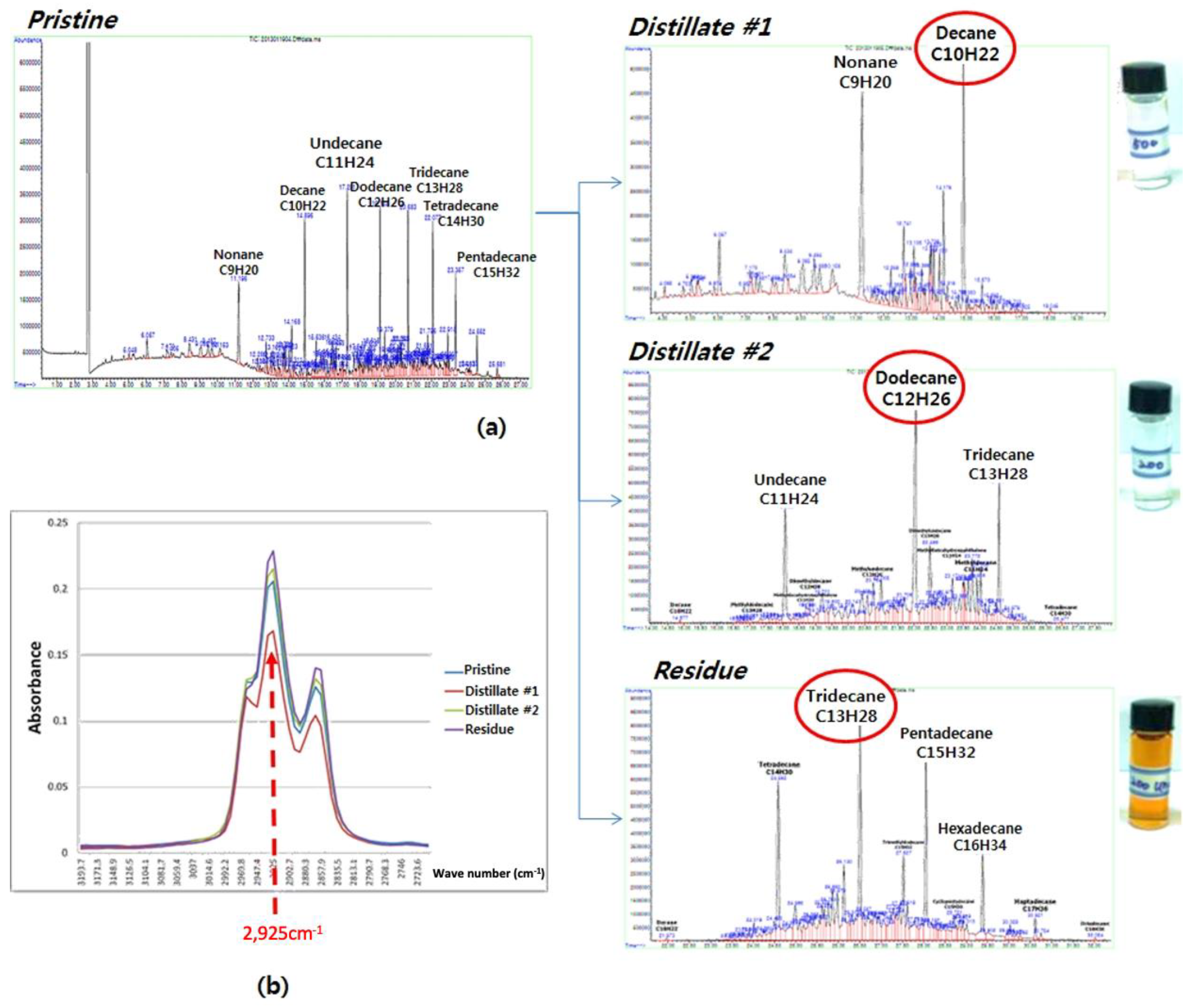
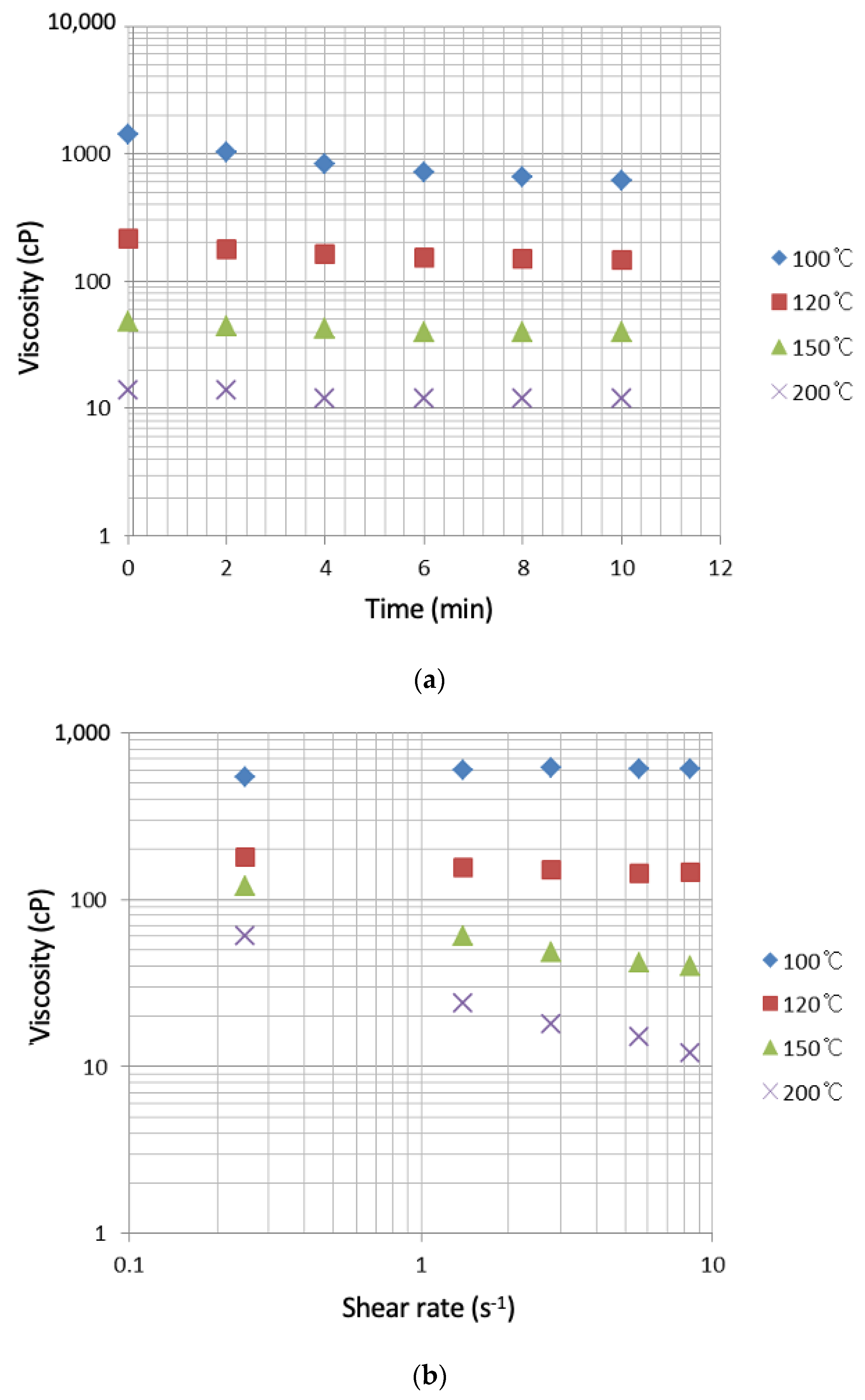
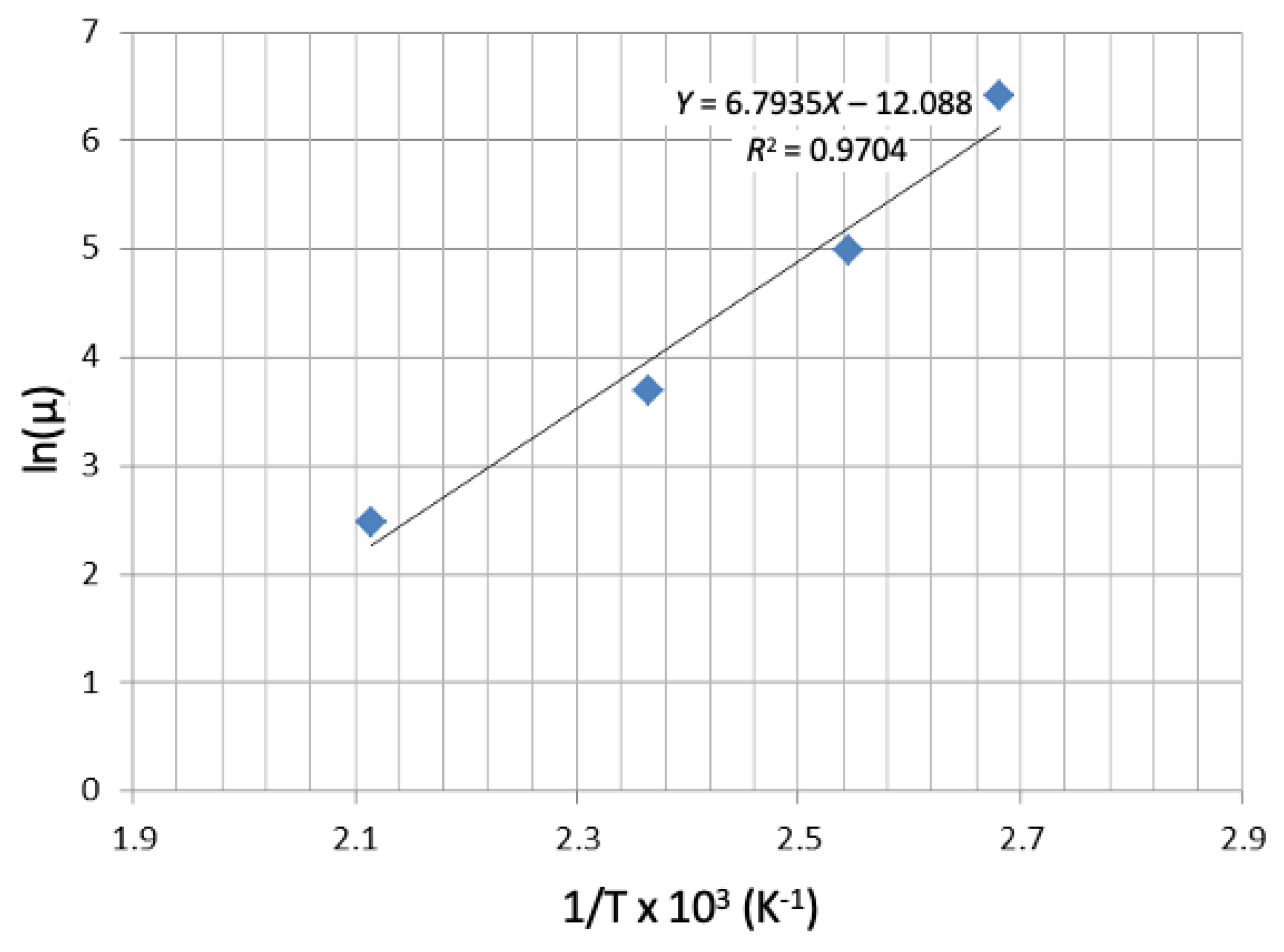
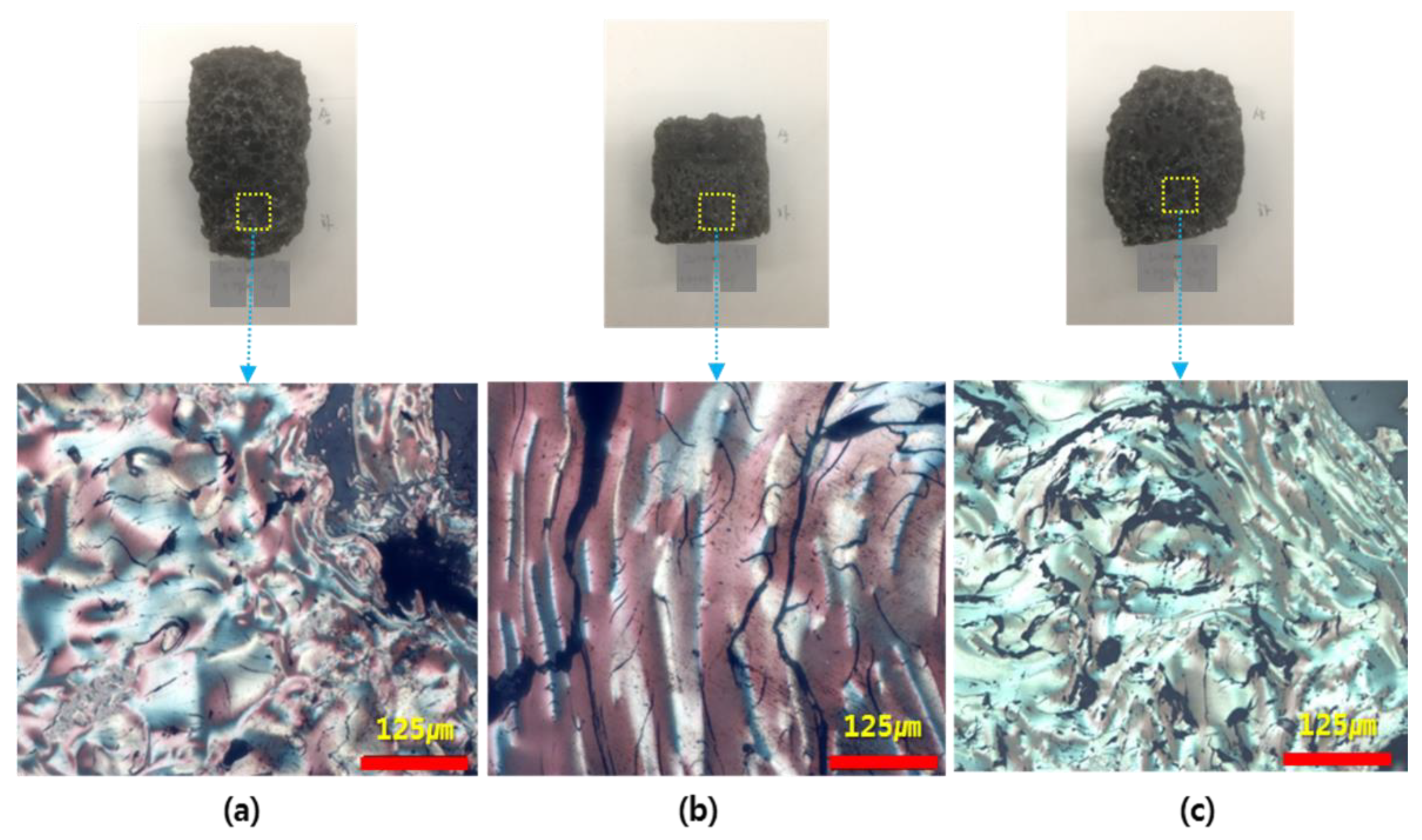
| Product | Distillate #1 | Distillate #2 | Residue | |
|---|---|---|---|---|
| Property | ||||
| Fraction (%) | 46.7 | 25.7 | 12.8 | |
| Pressure (mbar) | 500 | 200 | - | |
| Reboiler temp. (°C) | 160–200 | 176–199 | - | |
| Gas temp. (°C) | 110–174 | 149–178 | - | |
| AET * (°C) | 134.5–207.7 | 224.8–265.6 | >265.6 | |
| S.G. (g/mL) | 0.759 | 0.790 | 0.802 | |
| K-factor ** | 9.8–10.0 | 10.0–10.3 | >10.3 | |
| K-Factor of Additives | QI Content of Treated Coal Tar Pitch (wt%) | Extraction Process Yield (wt%) |
|---|---|---|
| 9.8–10 | 1.1 | N/A |
| 10–10.3 | 0.1 | 62 |
| 10.3 and above | 0.1 | 72 |
Publisher’s Note: MDPI stays neutral with regard to jurisdictional claims in published maps and institutional affiliations. |
© 2021 by the authors. Licensee MDPI, Basel, Switzerland. This article is an open access article distributed under the terms and conditions of the Creative Commons Attribution (CC BY) license (http://creativecommons.org/licenses/by/4.0/).
Share and Cite
An, J.-C.; Lee, S.-Y.; Park, J.-I.; Ha, M.; Shim, J.; Hong, I. Study of Quinoline Insoluble (QI) Removal for Needle Coke-Grade Coal Tar Pitch by Extraction with Fractionalized Aliphatic Solvents and Coke Formation Thereof. Appl. Sci. 2021, 11, 2906. https://doi.org/10.3390/app11072906
An J-C, Lee S-Y, Park J-I, Ha M, Shim J, Hong I. Study of Quinoline Insoluble (QI) Removal for Needle Coke-Grade Coal Tar Pitch by Extraction with Fractionalized Aliphatic Solvents and Coke Formation Thereof. Applied Sciences. 2021; 11(7):2906. https://doi.org/10.3390/app11072906
Chicago/Turabian StyleAn, Jung-Chul, Seong-Young Lee, Joo-Il Park, Manyoul Ha, Joongpyo Shim, and Ikpyo Hong. 2021. "Study of Quinoline Insoluble (QI) Removal for Needle Coke-Grade Coal Tar Pitch by Extraction with Fractionalized Aliphatic Solvents and Coke Formation Thereof" Applied Sciences 11, no. 7: 2906. https://doi.org/10.3390/app11072906





